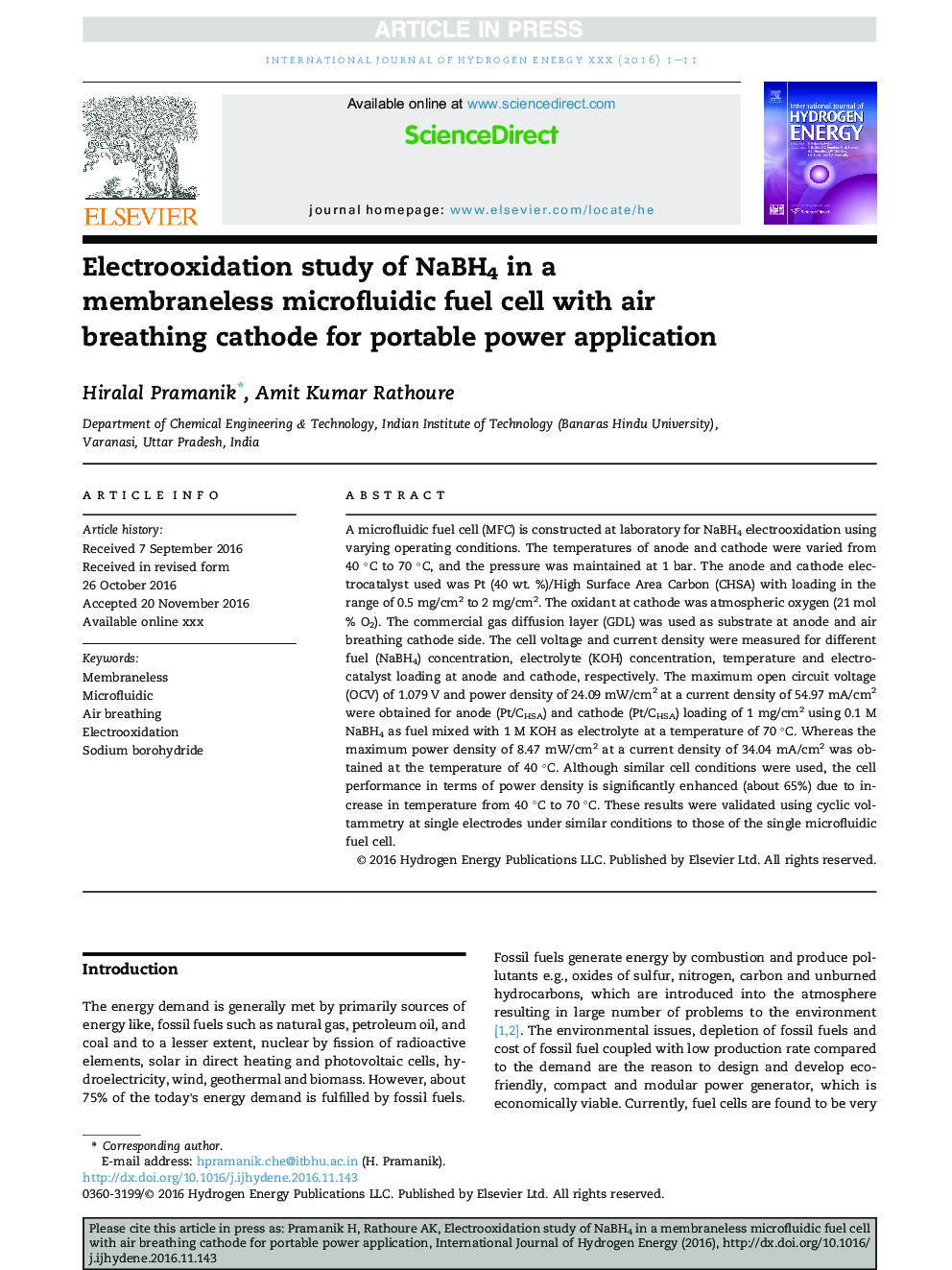| Article ID | Journal | Published Year | Pages | File Type |
|---|---|---|---|---|
| 5148409 | International Journal of Hydrogen Energy | 2017 | 11 Pages |
Abstract
A microfluidic fuel cell (MFC) is constructed at laboratory for NaBH4 electrooxidation using varying operating conditions. The temperatures of anode and cathode were varied from 40 °C to 70 °C, and the pressure was maintained at 1 bar. The anode and cathode electrocatalyst used was Pt (40 wt. %)/High Surface Area Carbon (CHSA) with loading in the range of 0.5 mg/cm2 to 2 mg/cm2. The oxidant at cathode was atmospheric oxygen (21 mol % O2). The commercial gas diffusion layer (GDL) was used as substrate at anode and air breathing cathode side. The cell voltage and current density were measured for different fuel (NaBH4) concentration, electrolyte (KOH) concentration, temperature and electrocatalyst loading at anode and cathode, respectively. The maximum open circuit voltage (OCV) of 1.079 V and power density of 24.09 mW/cm2 at a current density of 54.97 mA/cm2 were obtained for anode (Pt/CHSA) and cathode (Pt/CHSA) loading of 1 mg/cm2 using 0.1 M NaBH4 as fuel mixed with 1 M KOH as electrolyte at a temperature of 70 °C. Whereas the maximum power density of 8.47 mW/cm2 at a current density of 34.04 mA/cm2 was obtained at the temperature of 40 °C. Although similar cell conditions were used, the cell performance in terms of power density is significantly enhanced (about 65%) due to increase in temperature from 40 °C to 70 °C. These results were validated using cyclic voltammetry at single electrodes under similar conditions to those of the single microfluidic fuel cell.
Related Topics
Physical Sciences and Engineering
Chemistry
Electrochemistry
Authors
Hiralal Pramanik, Amit Kumar Rathoure,
